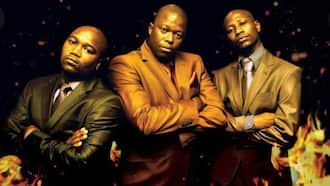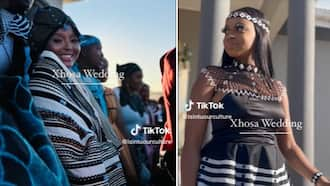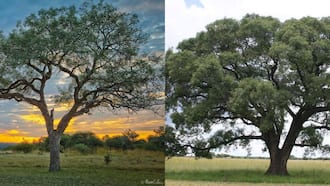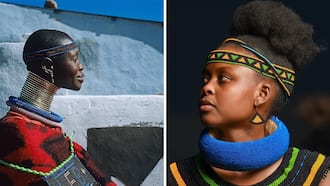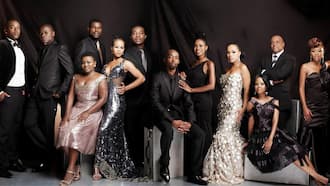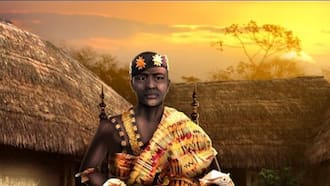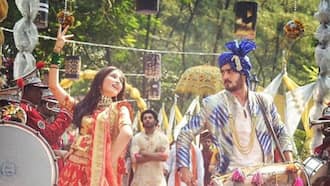All about Xhosa culture: cuisine, traditions, history, and attire
The Xhosa are often called the "Red Blanket People" because red and orange are the primary colors for their traditional attire. This tribe is part of the four Nguni (nations) tribes in South Africa. Like numerous other African communities, the Xhosa culture has rich and well-laid-out traditions, beliefs, rites, rituals, and ways of life. This article shares the most important aspects of the Xhosa culture, from religious beliefs to wedding, birth, circumcision, and death rites. It also touches on aspects about their homesteads, food, folklore, songs, and art.
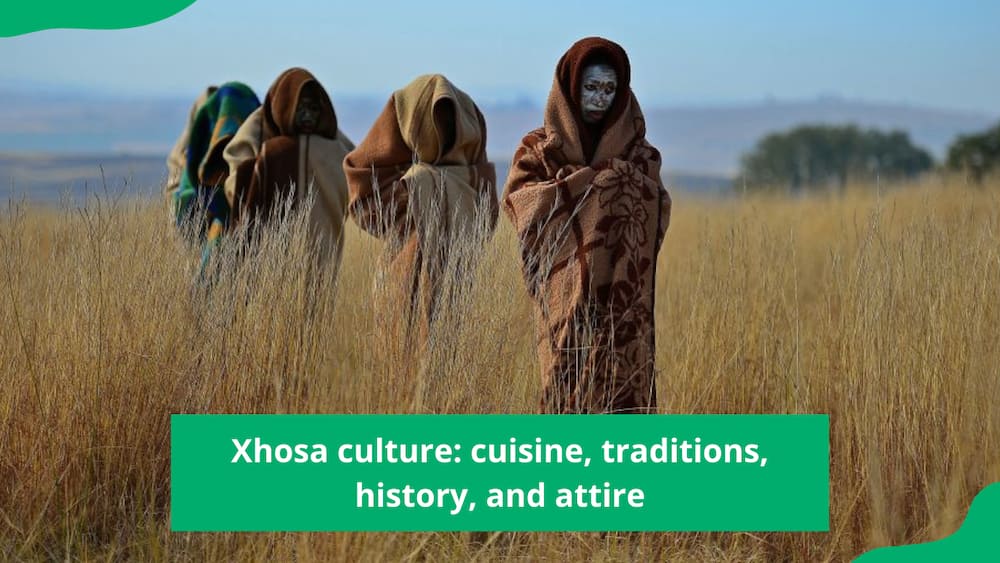
Source: Getty Images
The Xhosa are a Bantu-speaking tribe and the second-largest tribe in South Africa. These people are predominantly found in the Eastern and Western Cape provinces. The Xhosas call their language isiXhosa, but the world calls it Xhosa in English. Discover the most interesting facts about the Xhosa culture below.
The Xhosa culture and traditions
The Xhosa tribe is further divided into various subtribes, mainly the Mpondomise, Mfengu, and Thembu. They also have smaller subtribes like the Bhaca, Bomvana, Fingo, Nhlangwini, and Xesibe. Read the most intriguing truths about Xhosa origins and their culture below:

Read also
White man embraces Xhosa tradition with stylish attire in viral TikTok video, wins praise online
Xhosa culture: clothing and food
The Xhosa traditional clothing designs are a fashion statement. On top of this, their food is sumptuous and highly nutritious. Modern Xhosa people wear classic pieces and prepare native meals during special cultural and religious events.
What are some foods of the Xhosa culture?
The main Xhosa cuisine are corn-based meals, different types of meat, and milk (often fermented). They usually have meat during traditional celebrations, rituals, and rites. Some popular Xhosa meat-based dishes are inyama yebhokwe, umleqwa, inyama yegusha, and inyama yenkomo.
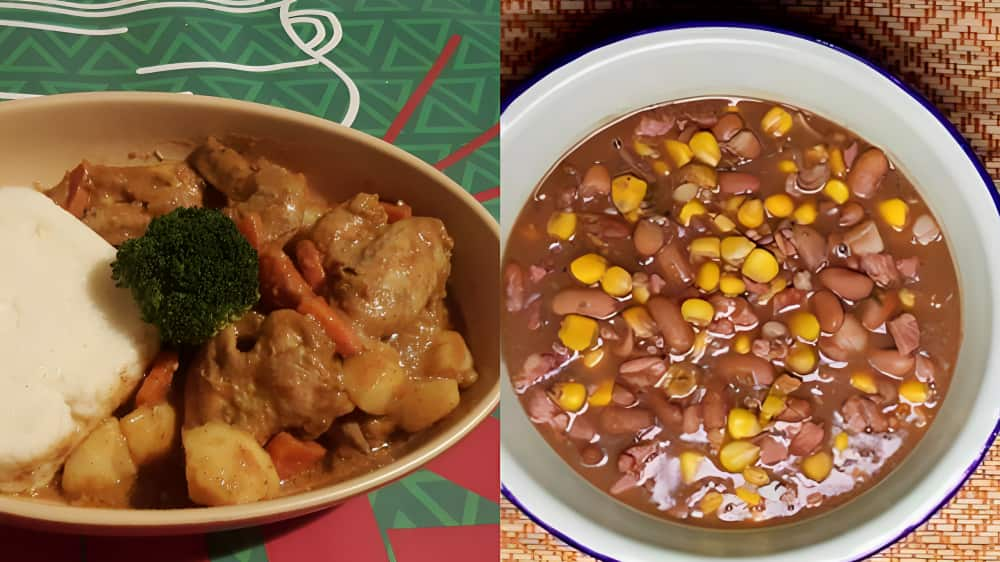
Source: UGC
Other popular Xhosa dishes are umngqusho (a savory combination of corn, beans, and spices), umqa (stiff maize meal porridge served with curried cabbage or spinach), and umxhaxha (a combination of pumpkin and corn), and umkhuphu (maize meal and beans).
Xhosa has numerous rules about food. For example, the liver is for young men, while the inguba (the meat between the intestines and the stomach wall) is reserved for older men. Men do not drink milk from a village where they might get wives, women do not eat eggs, and newly married women are not allowed to eat some types of meat.
What is the Xhosa traditional wear?
Traditional Xhosa attire are usually in brilliant colors like red, white, orange, or yellow. Married women wear long aprons over their dresses. The isikhakha (dress) is decorated with black bias binding at the hem and neck. The women complete the look with a cloak made from the same material, head scarves, breaded jewelry, and a sling bag called inxili.
A Xhosa head scarf for a woman is made of two or three materials of colors representing the different areas she comes from. Meanwhile, their beaded jewelry are primarily red, blue, dark blue, white, and yellow.
Most Xhosa traditional attire are cotton-woven and come in numerous unique styles and patterns. The men wear wrap-around skirts running from the waist to the feet. These are accompanied by a long scarf thrown over one shoulder, which can serve as a cloak when it gets cold.
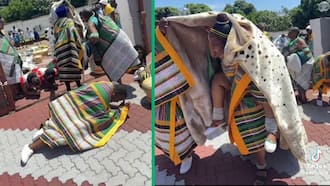
Read also
Video of Venda wedding takes TikTok by storm with cultural spectacle and traditional outfits
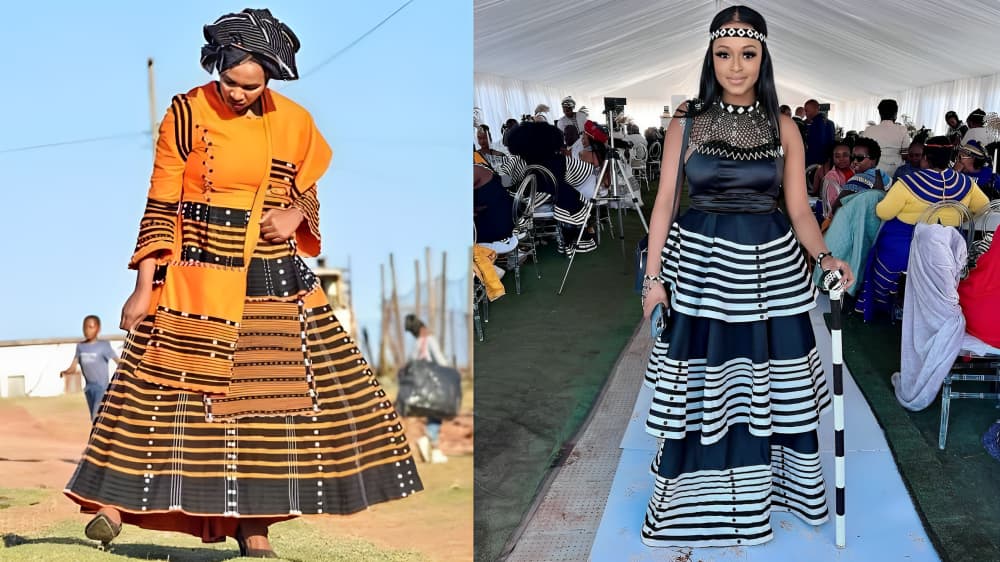
Source: UGC
Additionally, the men carry sticks given to them during their circumcision ceremonies. They can use these sticks to defend themselves and their families. Xhosa men learn how to fight with sticks growing up. Boys practice this fight while herding cattle in the veld (pastures).
Xhosa religious beliefs and customs
Today, many of the Xhosa people of South Africa are Christians due to their early contact with European missionaries. As a result, their religion has become a unique blend of traditional Xhosa beliefs and Christianity.
Who is the God of Xhosa?
The supreme being in Xhosa is called Mdali, Thixo, or Qamata, and they communicate with him through ancestral intermediaries. The primary role of the Xhosa ancestral intermediaries is to perform rituals and sacrifices, which are believed to help the people communicate with the spirits of their ancestors.
The ancestral spirits, in turn, act as mediators between the people and the deity. Xhosa people believe that Qamatha, the creator of all things, controls all things, and without the rules he laid down for humans, there would be confusion, madness, and uncertainty on Earth.
Although most Xhosa-speaking people generally accept Christianity, some of the tribes' descendants practice both Christianity and traditions.
The Xhosa marriage ceremony
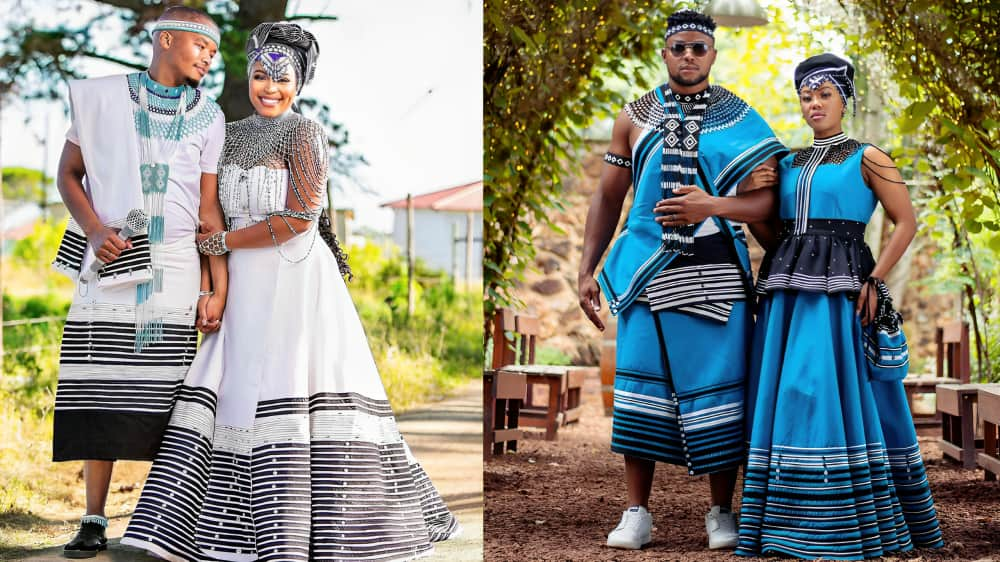
Source: UGC
Umtshato (marriage ceremony) is among Xhosa culture's most significant traditional events. The ceremony begins with the ukuzena process, which can be done in three ways.
The marriage proposal
The couple can do the ukuzibonela, whereby the man proposes to a woman before informing his family to accompany him to meet her people.
Alternatively, the girl's parents can practice ukholela, whereby they identify a man (a potential spouse for their daughter). Afterward, they send a family member (uncle or elder brother) to plant a spear in his parent's home early in the morning.
A family that wakes up to a spear planted in their home asks around to know where it came from. If they accept the proposal, they will return the spear by planting it in the home of the girl's parents. If they reject the proposal, they will keep the spear.
The third alternative is the ukuthwala, whereby the couple marry without consent from their parents. This usually happens when they fear opposition from the lady's family. After a secret courtship, they agree on the day and time of eloping.
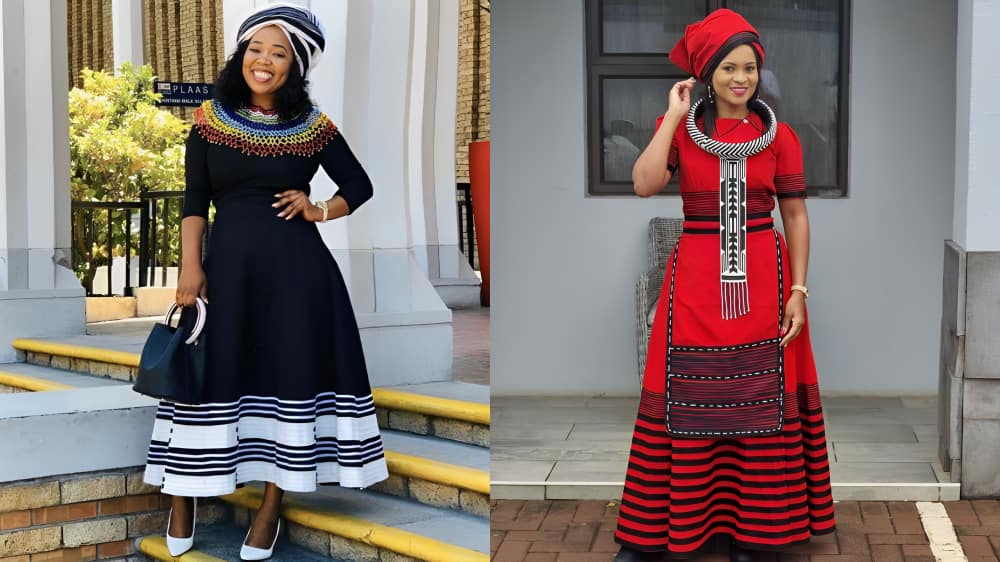
Source: UGC
The man sneaks into the woman's home in the evening and takes her to his home, where his parents will be waiting for introductions. The following morning, the man's family will visit the girl's parents to express their intentions to have her as a daughter-in-law. The girl's parents accept the proposal and request the man to pay a fine for eloping with their daughter.
The fourth option is the ukufilisha, whereby the man speaks to the girl's parents. It is up to the parents to reject or accept his proposal, and the bride-to-be's opinion does not matter.
The marriage proposal acceptance letter
After both families are aware of a potential marriage between their children, the man's family writes a proposal letter to the woman's family. The latter also responds with a letter. Two men from the woman's home deliver it to the man's parents. This traditional letter acceptance process is called ukuvuma.
The lobola ceremony
The woman's family informs the man's family of the date for the lobola ceremony through the acceptance letter. The groom's family pays ikhazi (dowry or bride price), which is usually money or cattle (ten to twelve cows). The dowry must be paid a few days or months before the wedding, and the man can add gifts like alcohol.
The amount of cash and the number of cattle a man pays depends on the agreement between his family and the bride's family. Additionally, if the marriage proposal was initiated by ukufilisha or ukholela, the girl's father or uncle can help the groom by paying part of the dowry.

Source: UGC
The lobola ceremony has several stages. The first payment, an imvulamlomo, is a small token or fee the groom pays the bride's family before his family can negotiate ikhazi (dowry or bride price) with them.
The second token, isazimzi, demonstrates the seriousness of the groom's family. It assures the woman's family that the groom's people specifically selected that girl's home among all the other homes in the village.
After the negotiations and agreeing on the dowry size, the bride's family performs isivumo. They slaughter a cow to feed the groom's family. It signifies the two families accept to have a relationship through their children's marriage.
The ikhazi is the main dowry, and two special cows should be set apart from all the cows the man pays. One is an ubuso bentombi (a cow for the bride's face), and the other is an inkomo yomthuko (a cow for the bride's mother).
The man pays intlawulo (a sacred cow or goat) if he has a child or children with the bride. It must be killed, cooked, and feasted on by both families on the same day it is brought to the woman's home. This cow is a fine the bride's family imposes on the man. Since having children out of wedlock is frowned upon, the ritual cleanses the name of the girl's family and also restores their dignity.
The Xhosa wedding ceremony
The Xhosa wedding ceremony takes at least three days. After the lobola ceremony, people escort the bride to the groom's home for uduli (bridal party). The party happens on the eve of the wedding day. The man's family gives the bride and her guests a special hut and gifts them a goat called umathulanthabeni.
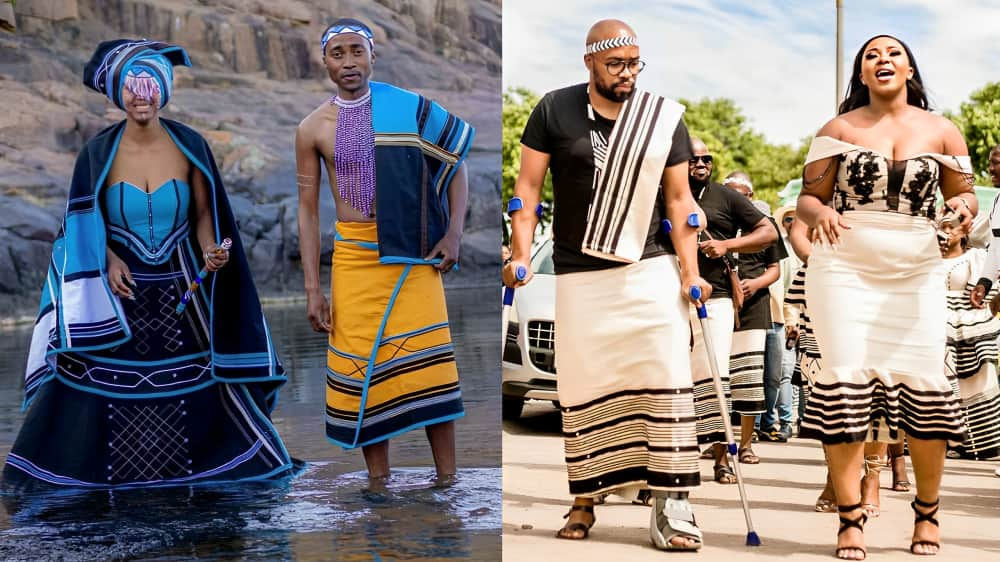
Source: UGC
The bride's people pay a fine called isiphembamlilo for the groom's family to give them a lighter to make a fire for cooking or roasting the goat meat.
The following day, they will pay the man's family a cow called inkomo yobulunga as blessings to the bride as she moves into her new home. A rope is made from the skin of the inkomo yobulunga and tied around the bride and her children (if she has any) to protect them from evil.
Later in the evening, the man's family will sacrifice a cow and offer the bride's family a leg, inxaxheba, as a token of appreciation for the new family ties. After that, the young maidens from the bride's family will help her light her first fire, which she will use when they are gone.
The following day will be for umdundo or umtshatso (the actual wedding). The man wears traditional outfits, while the bride wears her isishweshwe skirt and apron, ikhetshemiya (headcloth), imibhaco (beaded necklace and bracelets), and covers herself in ingcawa (a blanket).
The bride's people sing and dance while taking her to enkundleni (an assembly of the groom's family). Usually, the men are the lead singers, while the women respond to the songs.
When they get to the forum, two men from the bride's side uncover her to reveal her face. In response, male elders from the groom's side welcome and counsel her on how to conduct herself as a married woman. After that, female elders are given the chance to offer her more marital advice. This guiding and counseling process is called ukuyala.
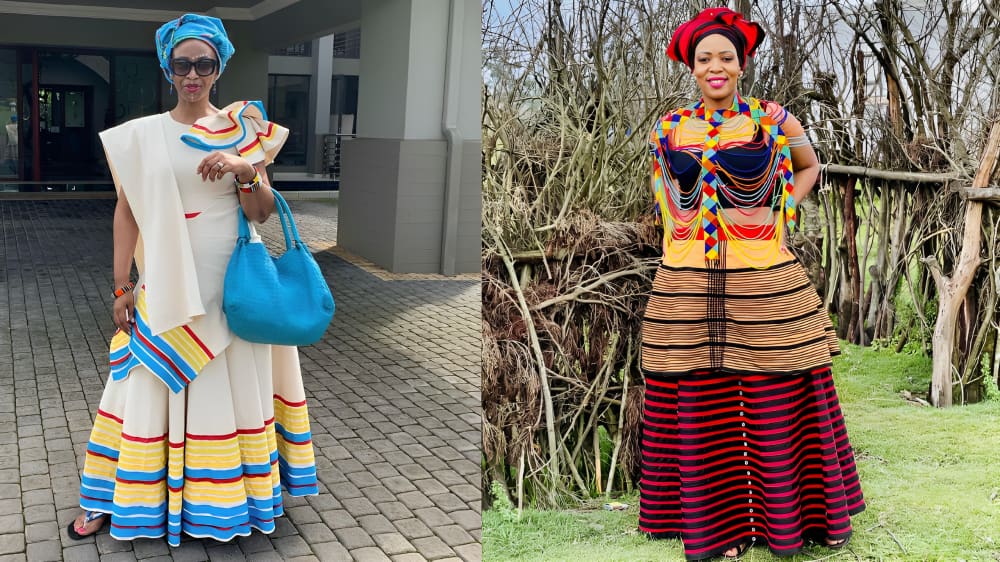
Source: UGC
After the ukuyala, people feast and drink umqombothi (traditional liquor) while singing and dancing ukuxhentsa (traditional dance). The families then gather again and give the bride a spear to throw as a sign she has been accepted into the new family. If the spear falls on the ground, it signifies her marriage will fail, but if it does not, the marriage will last.

Read also
Zulu, Xhosa, Tswana and 2 more traditional wedding dresses Mzansi loved, South African expert explains cost, fabrics and designs
The morning after the umdundo, the groom's family gives the bride's family blankets and other gifts. Meanwhile, the woman's family returns home, leaving behind an inkubabulongwe (a young girl) to help the makoti (newlywed woman) with chores like cooking, fetching firewood and water, and cleaning the hut.
In the evening, the groom's family will dress the new wife in umbhaco or umajelumane (a blue makoti attire), tie a small blanket around the waist, and cover her head with iqhiya (a black headscarf). She will sit on a grass-woven mat and eat goat meat and sour milk. The woman will use the mat wherever she goes instead of sitting in a chair.
For about three or four months after the wedding, she will undergo ukuhlonipha to learn how to do house chores, dress decently, address elders, and so on.
Xhosa birth rituals
Xhosa people do not pick children's names before birth. They wait till the child is born to know its gender, what it looks like, and how people feel so that they can give it an appropriate name.
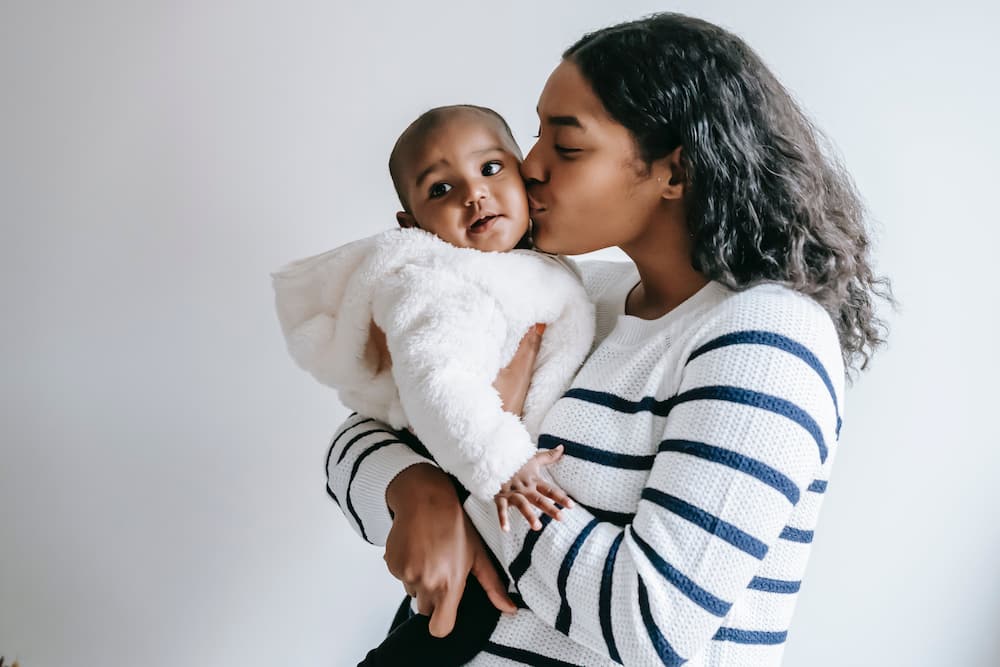
Source: UGC
The mother and child's seclusion period
A birthing mother is called umdlezana and is aided by her grandmother or midwives (women in the community who have experience helping fellow women deliver babies).
She gives birth in her rondavel, which is a circular dark room made with mud walls and a conical grass-thatched roof. The mother and baby spend ten days indoors, inside the rondavel, to allow the baby's umbilical cord to fall off.
During that time, the grandmother or community midwives mix ash, sugar, and a plant called umtuma, then rub the paste on the baby's umbilical cord. The mixture aids the drying process, which, in turn, makes the placenta fall off faster.
Once the placenta has fallen off, close female family members and a few women from the community gather in the rondavel to perform the sifudu ritual. They burn aromatic leaves from the sifudu tree and float the baby (upside-down) over its pungent smoke three times. The smoke makes the baby cough, and sometimes, scream severely.
The women return the baby to the mother, who then passes it under her left and right knees. The Xhosa people believe the sifudu ceremony strengthens the baby's spirit and protects it from future evil.
Afterward, they women will wash and smear the baby with ingceke, a white chalk made of grounded mtomboti wood. Its sweet smell stays on the baby for weeks.
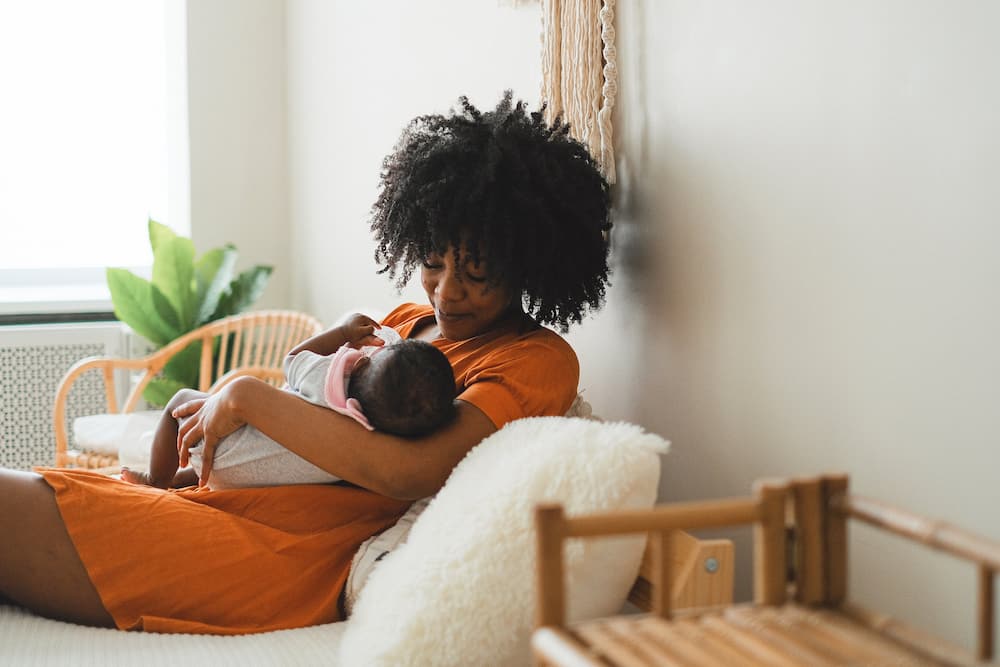
Source: UGC
The mother breastfeeds the baby before the women bury or burn the inkaba (placenta). The ritual protects the baby from sorcery and bonds it with its clan, ancestral land, and the spiritual ancestral world. In the future, when the baby is an adult, he/she can visit where their inkaba was buried to communicate with their ancestors.
What happens after the mother and child's seclusion period?
The family sacrifices a goat and invites friends and relatives to the imbeleko feast. The ceremony marks the end of the mother's ten-day period of solitude. Those who do not practice traditional Xhosa birth rituals can still be invited.
The family treats the goat's skin as a sacred item. They dry and preserve it for the new clan member, the baby, to sleep on in the future in times of trouble and connect with the ancestors.
The Xhosa naming ceremony
The child is named during the imbeleko ceremony. The Xhosa clan's “Praise-Singer” summons the ancestors vocally with praises. The singer chants qualities the family would love the ancestors to below upon the baby so that it grows into a responsible clan member.
After that, the baby is named after its father (surname) and one of its ancestors (first name). Also, it can be given names that signify seasons (rainy season, planting time, harvesting time, or the famine season) or the family's wishes for the baby, such as Sibabalwe (the blessed one). All traditional Xhosa names have beautiful meanings.
Xhosa circumcision rituals
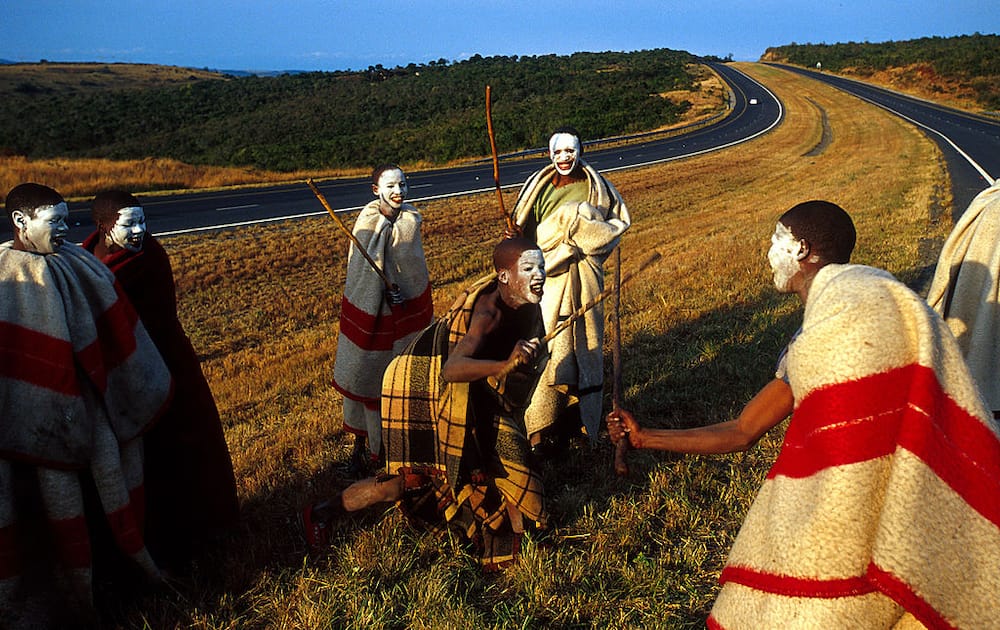
Source: Getty Images
The isiXhosa culture circumcises men and women. The abakweta (male initiates-in-training) live in bhoma (secluded huts) away from the village. The boys wear loincloths, cover themselves in blankets for warmth, and smear white clay on their bodies from head to toe.
The seclusion lasts about a month and is in two phases. During the first seven days after an ingcibi (traditional surgeon surgically has removed their foreskins, the initiates are confined to the huts and fed on certain foods. Some foods and water may be restricted. The initiates are not allowed to cry or show signs of pain as this would be considered shameful and an indication of weakness.
The second phase lasts two to three weeks, and an ikhankatha (traditional attendant) looks after them. The seclusion period ends with a goat sacrifice and the boys washing themselves. Also, they burn down the huts and the initiates' possessions, including their clothing, to symbolize a new beginning.
Each initiate receives an ikrwala (a new blanket), representing he is a new man or amakrwala. What's more, the initiates dress formally for some time after the rite.
The female circumcision ritual is shorter than that of their male counterparts. The intonjane (female initiates-in-training) stay away for a week, and no surgical operation is performed on their bodies.
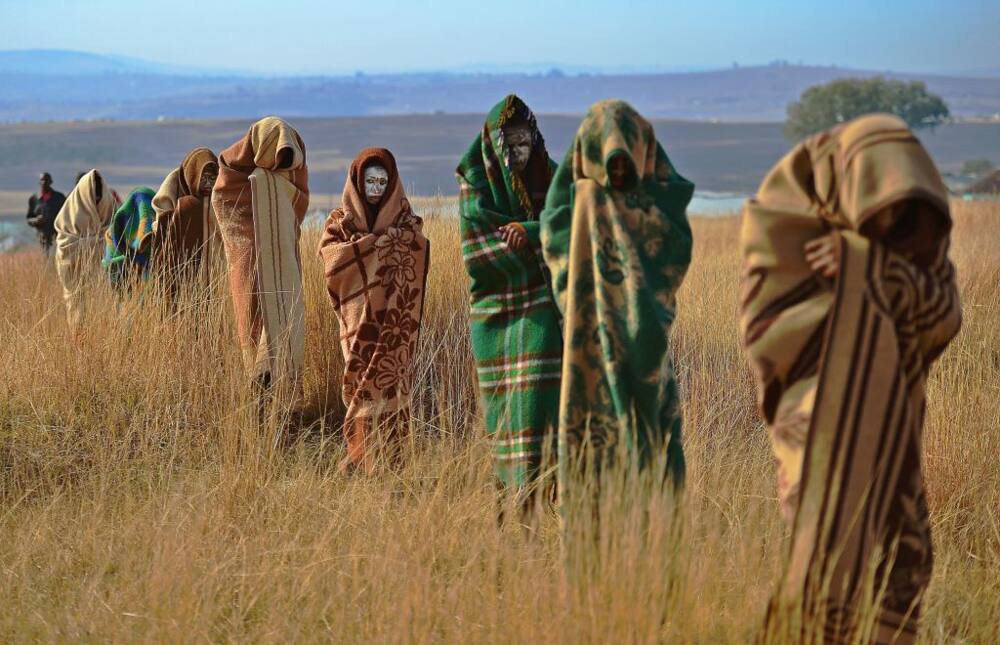
Source: Getty Images
Xhosa death and burial rituals
The Xhosa have well-defined burial rituals and practices. The nuclear family announces the death of their loved one to the extended family. The process is called umbiko. After that, relatives gathers to prepare for the burial.
The family conducts the indlu enkulu (or emptying the bedroom ritual) to honor the deceased and create space for mourners to view the body. One of the family elders guards the body throughout the days the burial preparations are going on. These days, people take the bodies to the mortuary.
The widow is not expected to talk too much. Some of the aunts sit with her in the house on grass mats and cover themselves with blankets while the other family members continue with the ukuvela (burial preparations).
Visitors and people trooping into the home to offer their condolences are allowed to hold imithandazo (prayers) for the family. Meanwhile, the community gravediggers dig and prepare grave. It takes about four days for them to complete the work and the family cooks for them daily as a sign of appreciation.
When the family brings the corpse home from the mortuary, they practice ukuvulwa kwebhokisi. This means a designated person speaks to the deceased before they leave the morgue and when they arrive home. Neighbors, relatives, and anyone can view the body in the coffin when it gets home. Xhosa people call this ukubona umfi.
Xhosa funerals (umngcwabo) do not come with an invitation. So, anyone can attend. The family provided a bull and umngqusho (corn and beans) to feed the mourners on the burial day.
A day after, women wash the deceased’s belongings to wash away death and family members also shave their hair, indicating that life continues after death; just like how the hair grows again.
A year after the person's death, the family sacrifices a bull to beseech the spirit return home. They believe the spirit must live with its family to guide and protect them.
If someone loses a spouse, they observe a one-year mourning period, during which the widow or widower wears black traditional Xhosa attire.
Where are the Xhosa originally from?
Archaeological evidence suggests that the Xhosa-speaking people have lived in South Africa's Eastern Cape area since the 7th century. Xhosa ancestors, the Nguni, are believed to have occupied central and northern Africa. They migrated and settled in the southern part of the continent before the arrival of the Dutch settlers.
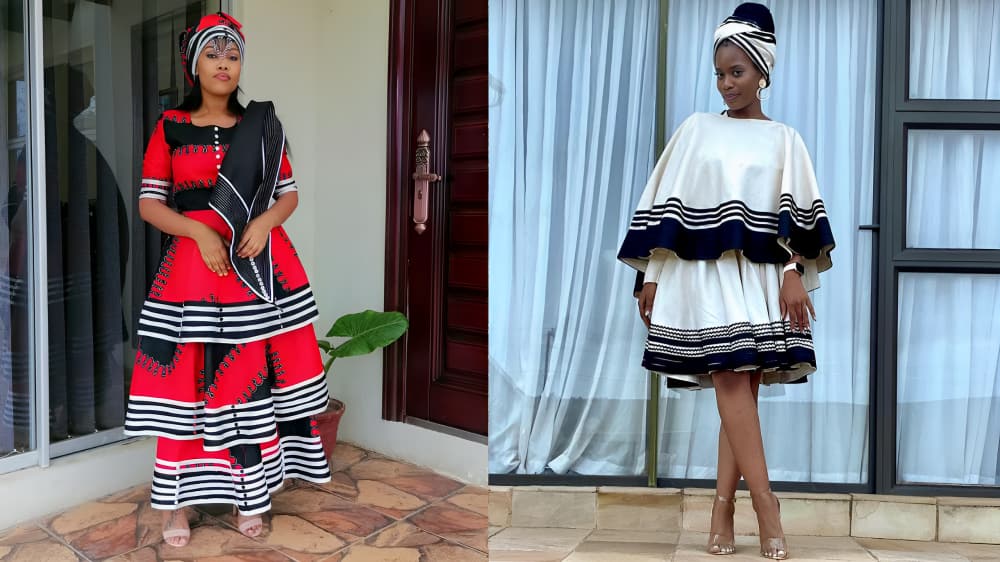
Source: UGC
The Nguni comprised several clans, such as the Gcaleka, Ngika, Ndlambe, Dushane, Qayi, and Gqunkhwebe of Khoisan origin. Their unity and ability to fight off colonial encroachment into their land were weakened by the famines and political divisions in the 19th century.
What language do the Xhosa speak?
The Xhosa language is called isiXhosa (or Xhosa in English). It is spoken by about 16% of South Africa's population. Unique click sounds distinguish this Bantu language and makes it sound slightly different from from Ndebele and Swazi languages. For example, the X, Q, KR, and CG form the clicks. The click Xhosa consonants were borrowed from Khoi or San words.
What are the Xhosa family rules?
The Xhosa family is primarily patriarchal. So, women and children submit to the men's authority and leadership as heads of households and the entire community. The tribe allows polygamous marriages so long as a man pays the lobola (bride price) for each wife.
What do Xhosa homesteads look like?
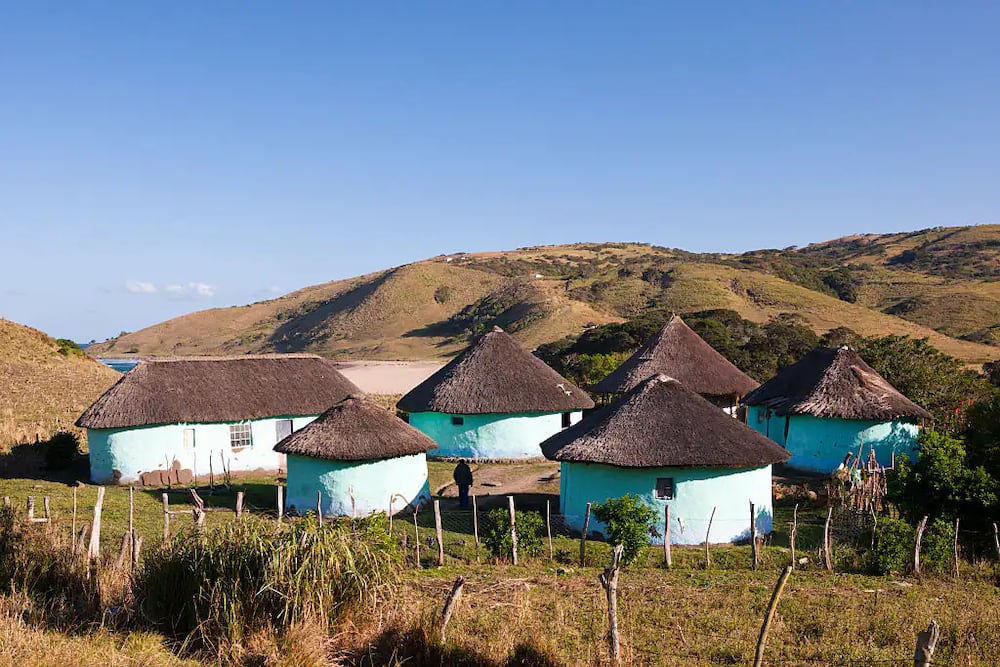
Source: Getty Images
Xhosa homesteads, imizi, are scattered over the rural landscape of the Eastern and Western Cape provinces of South Africa. The homesteads round huts with grass-thatched roofs and mud walls. The roof comprises circular wooded poles and saplings, bent and bound to form a conical shape.
A Xhosa homestead has several huts because they are polygamous. So, each wife needs a separate house. Additionally, sons who have been circumcised or married also need their own huts. The chiefs or wealthy men with large cattle herds sometimes allowed families not blood-related to reside at their homesteads.
What is the culture of Xhosa?
The Xhosa culture is extensive. First, they believe in a supreme being in Xhosa is called Mdali, Thixo, or Qamata. Xhosas communicate to him through ancestral intermediaries who invoke the spirits of the ancestors through rituals and sacrifices. Additionally, the Xhosas have unique wedding, birth, circumcision, and death rituals. They have traditional foods, folklore songs and stories, and native art.
Did the Xhosa have any artwork?
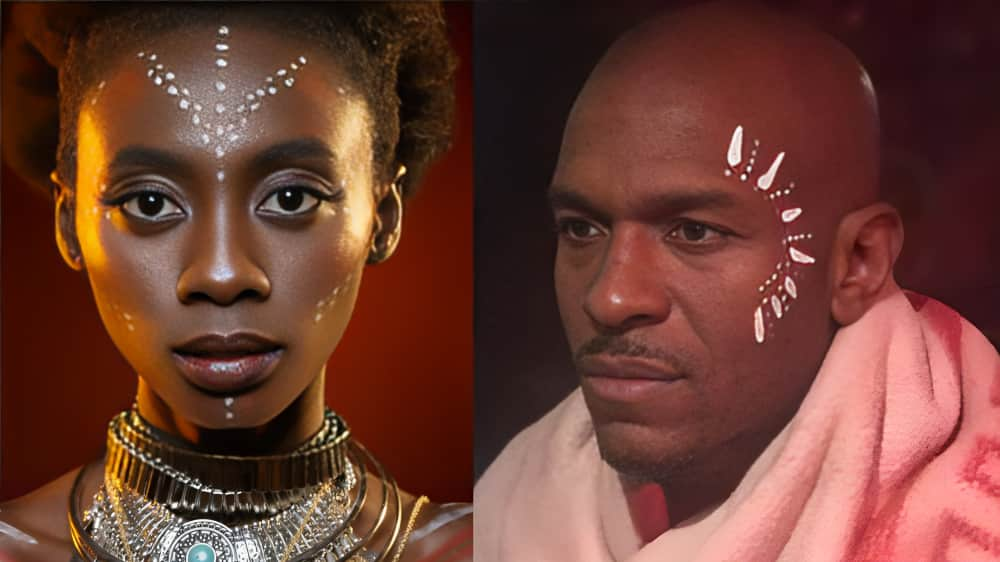
Source: UGC
Umchokozo, face painting, plays a significant role in Xhosa culture. The white or yellow ochre decorations are sometimes painted over their eyebrows, the bridge of their noses, and cheeks.
For men, face painting indicates status and conveys a strong cultural meaning. Meanwhile, women decorate their faces as a ritual to prepare themselves to be custodians of their culture.
Xhosa people make beads from nutshells, wood, glass, and metal. Anyone can wear the Xhosa beadwork as a fashion statement, even if they are not descendants of this tribe.
Xhosa folklore songs and stories
Like other Bantu languages, the Xhosa culture is rich in folklore songs, dances, stories (intsomi), verbal expressions, idioms, poems (izibongo), and proverbs. Most Xhosa stories and folktales are about the tribe's history, religious beliefs, and heroes.
Qongqothwane, by Miriam Makeba, is a timeless Xhosa wedding song. Meanwhile, most popular Xhosa folklore stories are about the first person on Earth and the origin of death.
The Xhosa tribe believes death originated when Qamatha (god) sent the chameleon to earth to tell people they would never die. However, the chameleon got tired on its way to Earth and decided to rest.
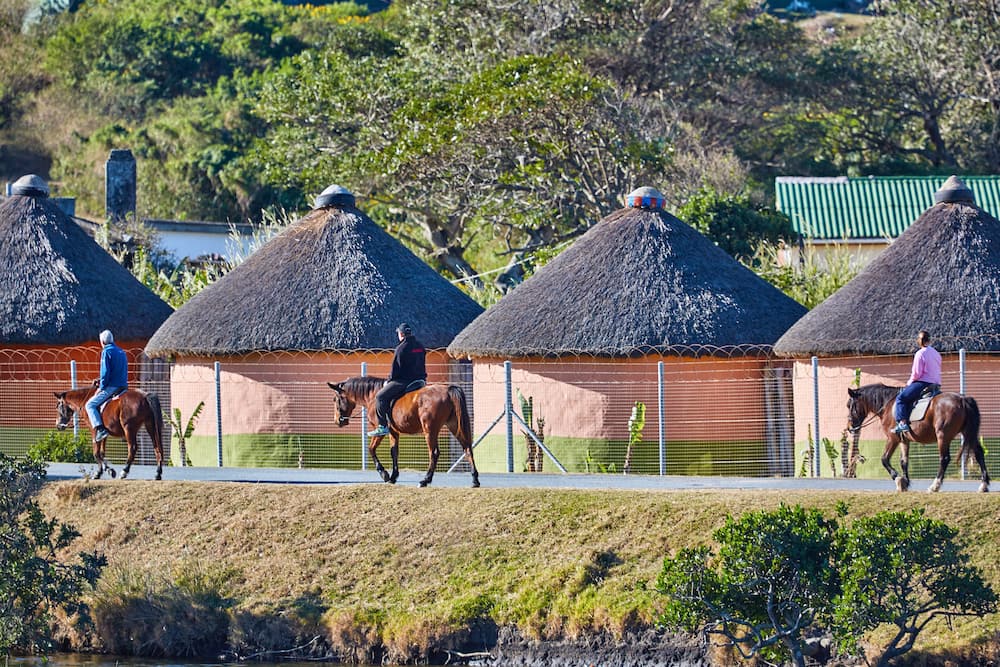
Source: Getty Images
The lizard found the chameleon resting and asked it where it was going. After the chameleon explained its mission, the lizard ran and told the people they would die. An outcry erupted on the Earth, with people crying because they were going to die.
When the chameleon heard this outcry, it proceeded to the earth to tell the people the true message from Qamatha, but they did not believe it. That is why people die.
What are the five habits of the Xhosa culture?
The Xhosa people emphasize traditional practices and customs inherited from their forefathers. Their culture is extensive because it has been practiced for centuries and passed down from generation to generation. Here are some five things they do:
- Xhosa people live in traditional homesteads called imizi.
- They speak in unique click sounds.
- A groom pays lobola (dowry) to the bride's family.
- They name children after their fathers and ancestors.
- Xhosa men undergo circumcision while the women pass through an initiation rite.
What is imbeleko in the Xhosa culture?
The imbeleko is a Xhosa child naming ceremony, and it marks the end of the ten-day mother and child seclusion period. The family introduces the baby to friends and relatives during this ceremony. Anyone can attend the event, including people who are not Xhosa.
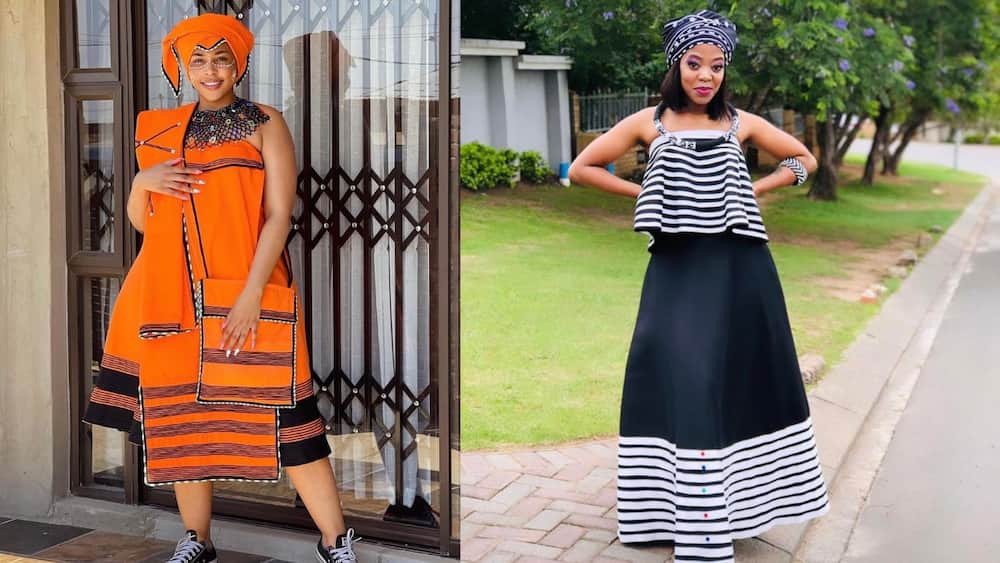
Source: UGC
What are some traditional customs of the Xhosa people?
The Xhosa people have many traditions and customs. Here are some five things they do:
- Xhosa boys learn to stick fighting early when herding cattle in the veld (pastures).
- Married Xhosa women wear long aprons over their dresses, cloaks over the dresses, head scarves, breaded jewelry, and carry sling bags called inxili.
- Xhosa men wear wraparound skirts running from the waist to the feet. These are accompanied by a long scarf thrown over one shoulder and serve as a cloak when it gets cold.
- Umchokozo, face painting, plays a significant role in Xhosa culture. They paint themselves over their eyebrows, the bridge of their noses, and cheeks.
- Xhosa homesteads have round mud huts with conical-shaped grass-thatched roofs.
Xhosa culture is broad and exciting to learn. Their beliefs, traditions, rituals, rites, and structures make them unique people. The Xhosa people are careful about preserving their culture and are dedicated to passing it on to the younger generations.
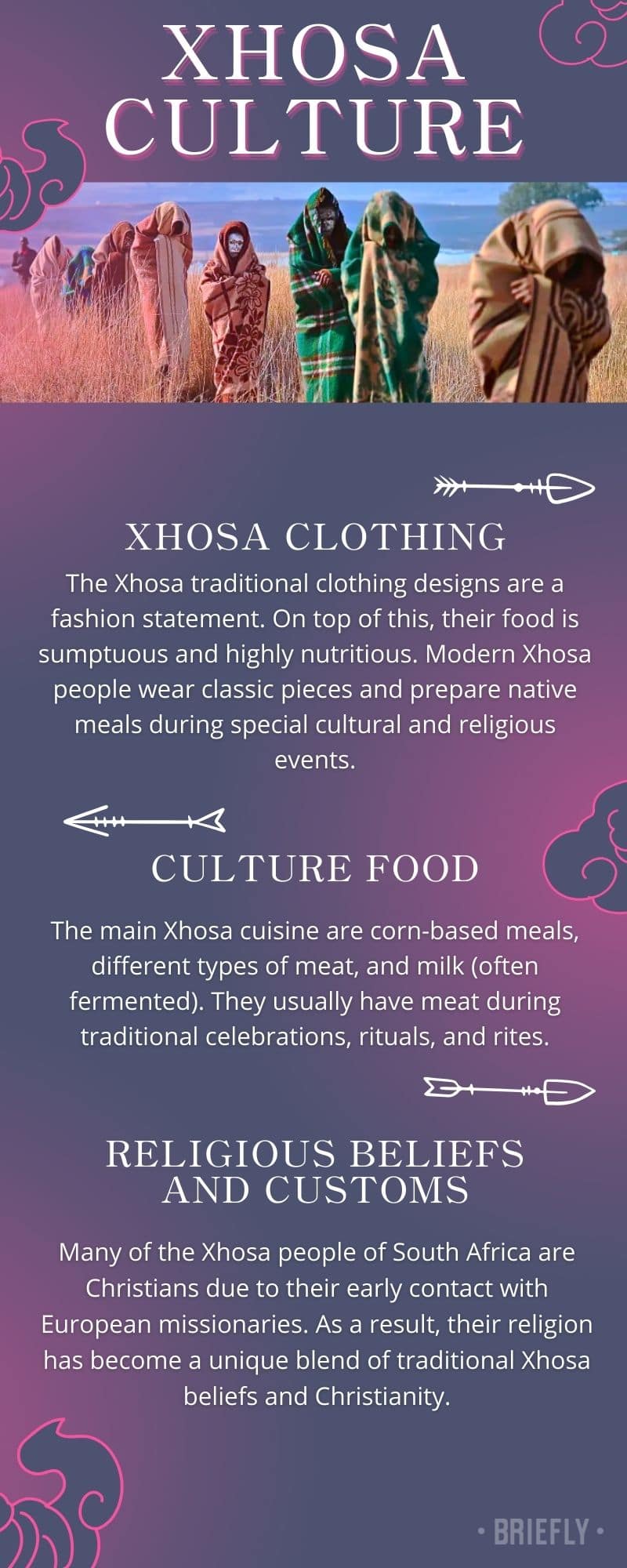
Source: Original
Briefly.co.za published an article about the top Sotho names for boys and girls. The Sotho language is part of the Bantu ethnic group, and there are three different dialectical groups within the Sotho tribe: Sepedi (northern Sotho), Sesotho, and Setswana.
The Sotho people are in Botswana, Lesotho, and South Africa. Like other African communities, they have a unique way of naming their newborns. Additionally, all Sotho names have deep cultural meanings.
Source: Briefly News




